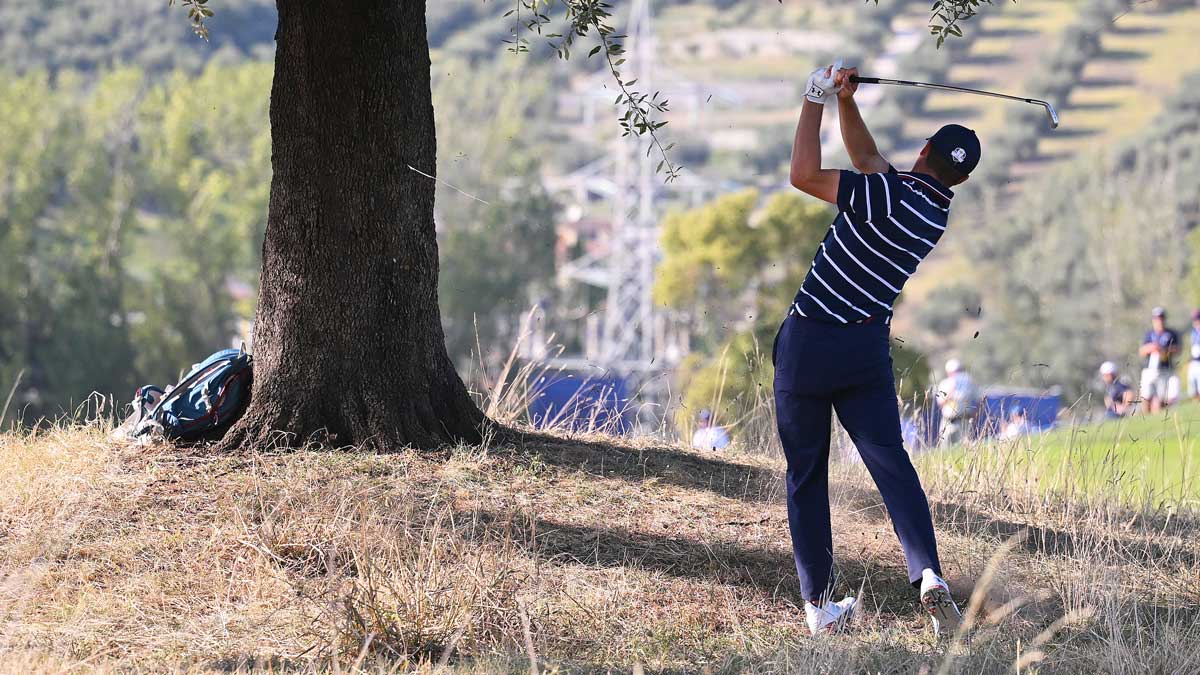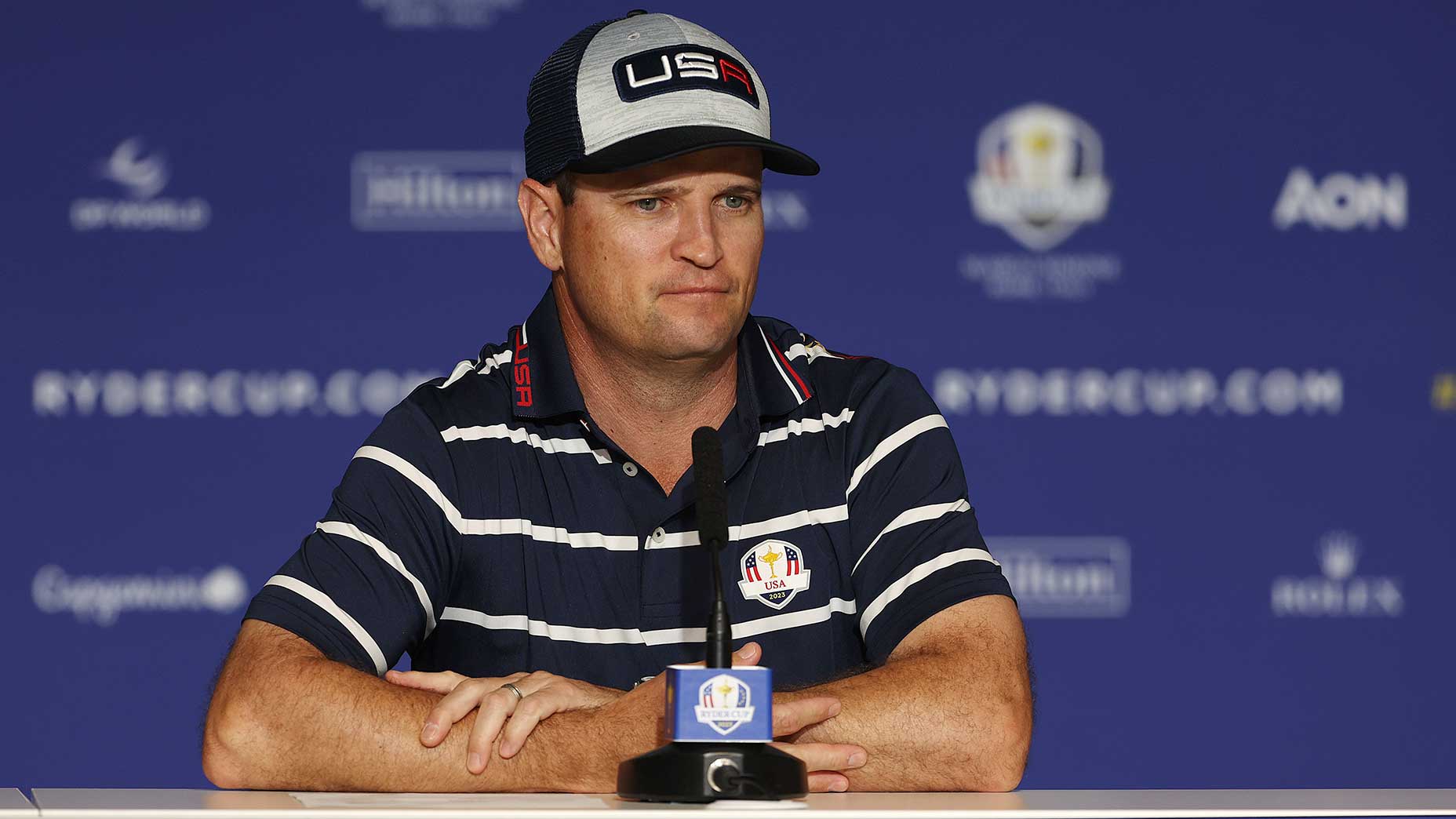
Jordan Spieth lost control of his game late in his Friday four-ball match at the Ryder Cup.
getty images
In the run-up to this 44th Ryder Cup, there was much speculation (or flat-out concern for many American fans) about how Justin Thomas might perform. Thomas, you might have heard, hasn’t been playing his best golf in recent months, having missed the cut in five of his last nine starts before the Ryder Cup, a run that included an 81 at the U.S. Open and an 82 at the Open Championship.
Less discussed was the form of his go-to match-play partner, Jordan Spieth, even though Spieth, too, hasn’t exactly been setting the golf world ablaze. In his last 10 starts of his 2023 season, dating to the Wells Fargo in May, Spieth did notch two top 10s — at the Memorial, in June, and, more recently, at the FedEx St. Jude — but also missed four cuts and failed to finish top 20 in the last three majors.
Still, U.S. captain Zach Johnson had deep faith in both players, awarding each of the childhood pals one of his half-dozen captain’s picks. Could you blame Johnson? You could, sure. But you also could not, largely because Thomas and Spieth have, as partners, been match-play dynamos. In Ryder Cups and Presidents Cups, they had produced a record — before this week — of 7-1-0. How do you not go back to that well?
So Johnson did, setting up one of the week’s most intriguing questions: Could Thomas and Spieth, even without their best stuff, summon their mystical match-play magic and help lead the U.S. to victory? Those aching for an answer would have to wait a few hours longer than most pundits expected, because, in a surprise move, Johnson elected to sit Thomas and Spieth in the opening session.
Head-scratching decision? It sure looked that way by the time Thomas and Spieth — in the first four-ball match of the afternoon and with the U.S. desperately needing a jolt and a point — had opened up a 2-up lead through 13 holes over Viktor Hovland and Tyrrell Hatton. The U.S. boys had ham-and-egged well to that point with Thomas making two birdies, at 6 and 12, and Spieth adding three more, at 4, 12 and 13, including one of his trademark dagger hole-outs from the heavy lettuce off the green at the par-3 4th. Neither player was bludgeoning the course but they were doing what they so often do: whatever it takes to win. When Thomas and Spieth marched off the 13th green, the Europeans, according to the Ryder Cup stats whizzes, had a mere 24% chance of prevailing.
But then, quite suddenly, came something wholly unexpected: the disappearance of Jordan Spieth’s game. Like a Titleist burrowing into the shin-high Marco Simone rough, Spieth’s shotmaking up and vanished, leaving his partner to fend — and defend — for himself.
The horrors began on the tee at the par-4 14th, where Spieth overcooked his drive into the rough and beneath a tree left of the fairway. He hacked his second shot into even-gnarlier greenside rough from where he could pitch his ball no closer than 25 feet. Bogey.
At 15, another hook into the rough, this time leading to a lie so wretched that he could advance his ball only 18 yards. After muscling his third shot up toward the green, Spieth said, “Aww, I just missed that.” It looked like more than a just with his ball coming 30 yards short into a greenside bunker. When Spieth’s next shot didn’t find the green, he was in his pocket. Fortunately for the U.S., a Thomas par kept them 1 up.
Spieth needed all of one swing to play himself out of the next hole: a blocked tee shot into the water right of the green. When Hatton birdie, the match was tied. At 17, a long par-3, another right miss, 20 yards wide of the green, leading to the third consecutive hole on which Spieth didn’t even hole out. Again, Thomas kept them in it, making par, and the match moved to 18 deadlocked.
Incredibly, the worst was yet to come. On the par-5 18th and with a crucially important point in the balance, Spieth missed another fairway left, meaning he had no chance to reach in two. Drawing another horrible lie, he hit his next shot just 70 yards and his third shot only 120 yards. That left a wedge approach from 95 yards to a pin guarded by — gulp — water left. Yep, splash. Thomas and Hovland traded birdies to halve the match.
Spieth didn’t speak to the media afterward, but his partner did.
“Felt like it could have just as easily gone the other way,” Thomas said. “It’s a bummer. It’s not the start we wanted but fortunately for us we’ve got a lot of golf left.”
Added U.S. captain Zach Johnson: “Proud of those boys. I mean, the way they came out. Yeah, I mean, Jordan didn’t have his best possible, but that’s why we’re in tandems, and Justin — those two guys know what they are doing in this arena.”
At 7:35 a.m. local time Saturday, they’ll get yet another chance to prove that. Johnson has tapped Thomas and Spieth to play together again in the opening match of the Day 2 foursomes session, where they’ll face a formidable squad in Rory McIlroy and Tommy Fleetwood, aka Fleetwood Mac.
“We’ll just go get some sleep, regroup and go try to win as many points as possible tomorrow,” Thomas said.
One point would be a good start. Build from there.









